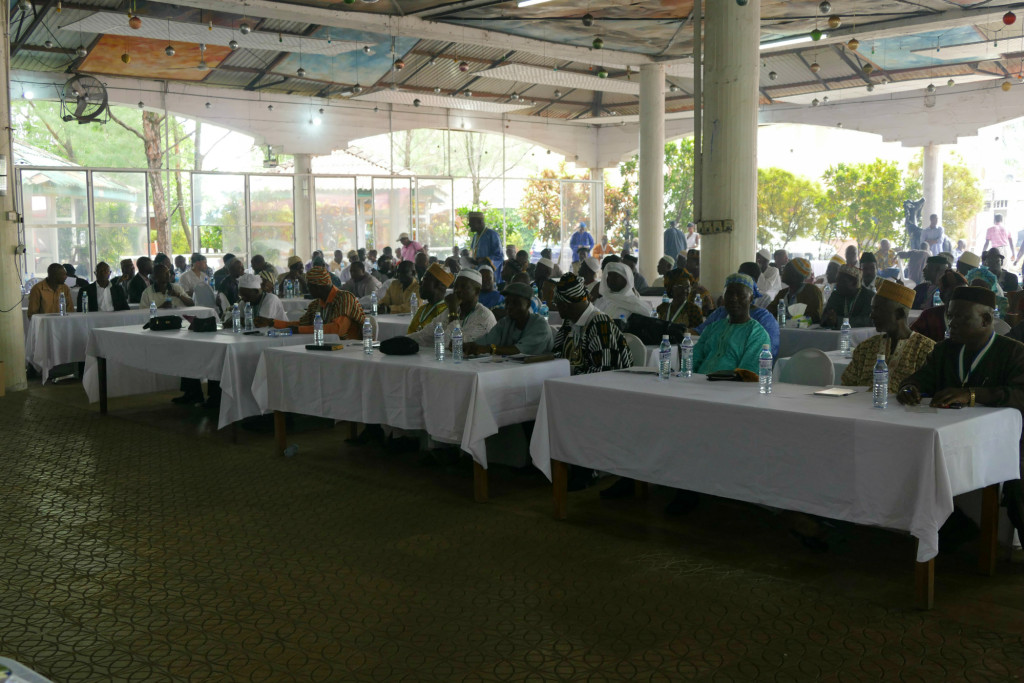
Traditional leaders in Sierra Leone meet to discuss their role in the Ebola response. Silke v. Brockhausen/UNMEER
A central response mechanism should be in place to link local-level command centers to the national command center. During the 2014–15 West Africa outbreak, with international support, Guinea, Liberia and Sierra Leone set up coordinating mechanisms to contain the spread of the disease.
In Sierra Leone, for example, the government created a National Ebola Response Center (NERC) that, together with the United Nations Mission for Ebola Emergency Response (UNMEER), served as a robust command and control structure involving multiple implementing partners led by the Ministry of Health and Sanitation. The NERC oversaw 15 District Ebola Response Centers (DERCs) with a feedback loop between the NERC and the DERCs. These DERCs also coordinated with the district health management teams for technical aspects of the response, and were joined by national and international partners. Liberia and Guinea set up similar decentralized national structures, but the information flows and local-level structures varied among the countries.
Typically, a central Ebola response mechanism might consist of the following coordination focus areas, or pillars:
Case management, which typically includes contact tracing
Safe and dignified burials
Psychosocial support
Media/communication
Social mobilization/community engagement
For the purpose of this I-Kit, our focus is on the two pillars of SM and media/communication coordinating mechanisms and how they link to the other response efforts.
Back to Chapter 3
